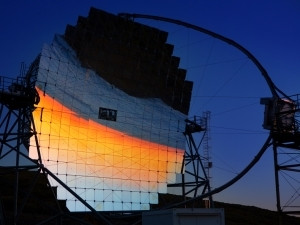
Science and technology minister Naledi Pandor will meet Namibia's parliamentary committee on science this week, in support of the neighbouring country's bid to host the Cherenkov Telescope Array (CTA).
The project is set to be the world's biggest ground-based gamma ray observatory.
According to the CTA consortium, the project seeks to understand the origin of cosmic rays, and search for "the ultimate nature of matter and physics".
The Department of Science and Technology (DST) says the CTA consists of two arrays - one in each hemisphere, while Namibia is competing against Chile to host the 60-dish southern hemisphere portion near the remote railway town of Aus. Host countries will be announced later this year.
"SA and Namibia have a standing programme for collaboration on gamma ray detection. Namibia is the home of the gamma ray observatory called the High Energy Stereoscopic System," the department said in a statement.
The CTA consists of more than 1 000 scientists working in over 170 research institutes in 28 countries, including SA, Namibia, Australia, the UK, Japan and the US. Local institutions involved are North-West University, the University of the Free State, the University of Johannesburg, and the University of the Witwatersrand.
Shared expertise
The DST says SA has allocated a task team of local experts to assist their Namibian counterparts with their bid for the CTA project. "South African scientists will undoubtedly benefit from Namibia's success if it wins the bid to host the CTA," the department adds.
Pandor will also use her visit to further discussions on the African Very Long Baseline Interferometry Network - an array of radio telescopes throughout Africa. She will also brief Namibia's science and technology minister David Namwandi on matters related to the Square Kilometre Array (SKA) radio telescope, hosted near the Northern Cape town of Carnarvon.
The DST unveiled the first telescopes of SKA predecessor MeerKat in March.
Share